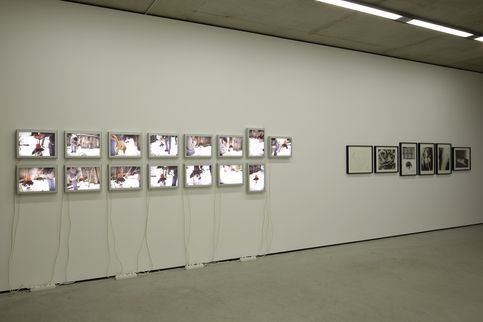Folklore
A Controversy with Works from the Collections
Curators: Sabine Breitwieser, Director, Museum der Moderne Salzburg; Antonia Lotz, Curator, Generali Foundation Collection
Venue: Museum der Moderne Salzburg, Mönchsberg
Brazenly challenging the premises of progress and innovation that usually frame our perspective on modern and contemporary art, the eighth installment in the series of exhibitions with works from the collections at the Museum der Moderne Salzburg, organized in partnership with the Generali Foundation, put the focus on folklore.
Twenty-eight artists' works, on permanent loan from the Generali Foundation Collection and the Austrian Federal Photography Collection, as well as from the museum's own holdings, illuminated the multilayered and constantly changing facets of folklore between tradition and renewal.
In a world shaped by globalization and migration, issues of identity and tradition have attained a new significance. The concept of "folklore" came into currency in the mid-nineteenth century as an umbrella term for the unwritten forms in which communities expressed and passed down their traditions: fairy tales, songs, costumes, and crafts. In its everyday meaning, the term is often associated with folk music, manufactured sentimentalism or kitsch. In academic research, by contrast, folklore is studied as a medium of traditional knowledge and practice. As such—and as an expression of human behavior—it has long been an essential component in the exploration of nationalism, industrialization, colonialism, and modernization.
These and other controversial aspects of folklore were represented in the exhibition through works created between the early twentieth century and the present. The selection ranged from illustrated versions of Grimm's Fairy Tales and ideologically charged photographs from the 1930s to post-war reflections on local identity and confrontations with colonialist depictions of foreign cultures. The exhibition also invited debate on possible contemporary forms of "folklore" and its industrial-age variations. To what extent are cultural heritage and traditions subject to change? Are continuity and innovation compatible, or are folklorism and "fakelore"—the distorted representation of mores and customs—all we are left with? And what is the identity of the folklore of the present and future?
Artists: Anna Artaker / Lilla Khoor, Kader Attia, Peter Paul Atzwanger, Lothar Baumgarten, Norbert Brunner / Michael Schuster, Jean Dubuffet, VALIE EXPORT, Harun Farocki, Heinz Frank, Dan Graham, Rodney Graham, Hans Walter Hannau, David Hockney, Kathi Hofer, Rainer Iglar, Kurt Kaindl, Joachim Koester, Rudolf Koppitz, Stefan Kruckenhauser, Michael Mauracher, Martha Rosler, Nedko Solakov, Ingeborg Strobl, Umbo, Lois Weinberger, Erwin Wurm


